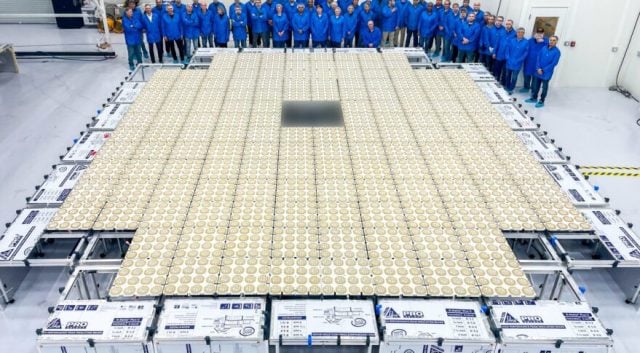Since the launch of the BlueWalker-3 satellite in September, observers have anxiously watched the sky in anticipation of its full deployment. Now the prototype satellite has fully deployed its antenna array, greatly increasing the brightness and creating a threat to space exploration.
AST SpaceMobile Company announced the full deployment of the communications array of its test satellite, deploying a 64 square meter antenna array in low Earth orbit. This antenna array is the largest ever commercial communications array deployed in low Earth orbit and designed to transmit communications directly to smartphones.
“Made in TX — size matters”
But astronomers who collect data from the sky have nothing to brag about. With its antenna fully deployed, the satellite can be one of the brightest objects in the night sky, according to Sky and Telescope magazine.
Marco Langbroek, an astrodynamics lecturer at Delft Technical University in the Netherlands, has been tracking BlueWalker 3 since its launch. During overhead observations in September, the satellite had a brightness magnitude of around +3.5, making it visible to the naked eye but not very bright. However, since the satellite deployed its antenna array, it has become significantly brighter.
"Several early reports by other observers from the past few days indicate a significant brightening by about 2 magnitudes," said Langbroek in an email to Gizmodo. “That is about 6 times brighter than before as one magnitude difference equals a factor 2.512 in brightness. One report during a very favorable zenith pass indicated a peak brightness at magnitude +2 to +1, that is about as bright as the stars of Orion".
Langbroek anticipates that the satellite could get even brighter since it only started to unfold recently, and the visibility in the northern hemisphere at the moment is not ideal for astronomers to observe the satellite’s brightness.
Astronomers have expressed concern that the satellite could interfere with observations, appearing as a bright streak of light in telescope images and saturating detectors at observatories.
NSF's NOIRLab and the International Astronomical Union's (IAU) Center for Dark and Quiet Sky Defense from Interference by Satellite Groups called on astronomers around the world to observe the satellite and note the magnitude of its brightness as it orbits the Earth.
"[Low Earth orbit satellites] disproportionately affect science programs that require twilight observations, such as searches for Earth-threatening asteroids and comets, outer Solar System objects, and visible-light counterparts of fleeting gravitational-wave sources," says NSF.
By itself, BlueWalker 3 is large enough to interfere with space observations. However, the satellite prototype is only a test for creating a whole constellation of more than 100 satellites. AST SpaceMobile wants to create the first and only space-based cellular broadband network available for mobile phones by sending more of its satellites into orbit by the end of 2024.
Low Earth orbit is already being filled with commercial satellites. Elon Musk's SpaceX plans to deploy more than 42,000 satellites in low Earth orbit. Amazon also plans to launch a fleet of 3,236 satellites for the Project Kuiper, while OneWeb wants to launch 648 satellites.

